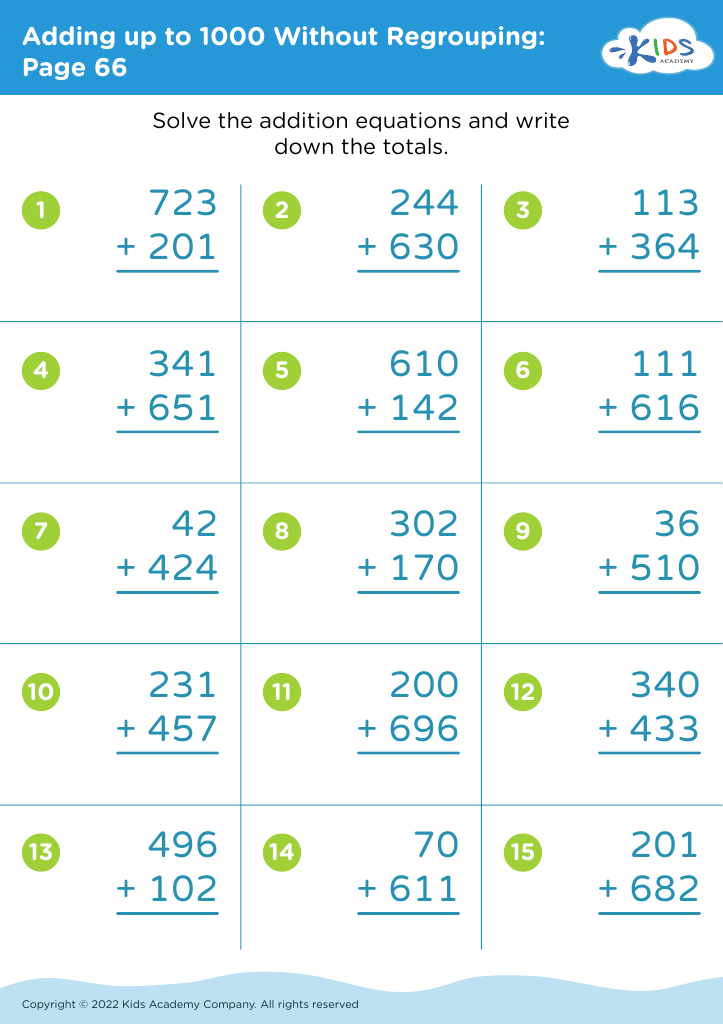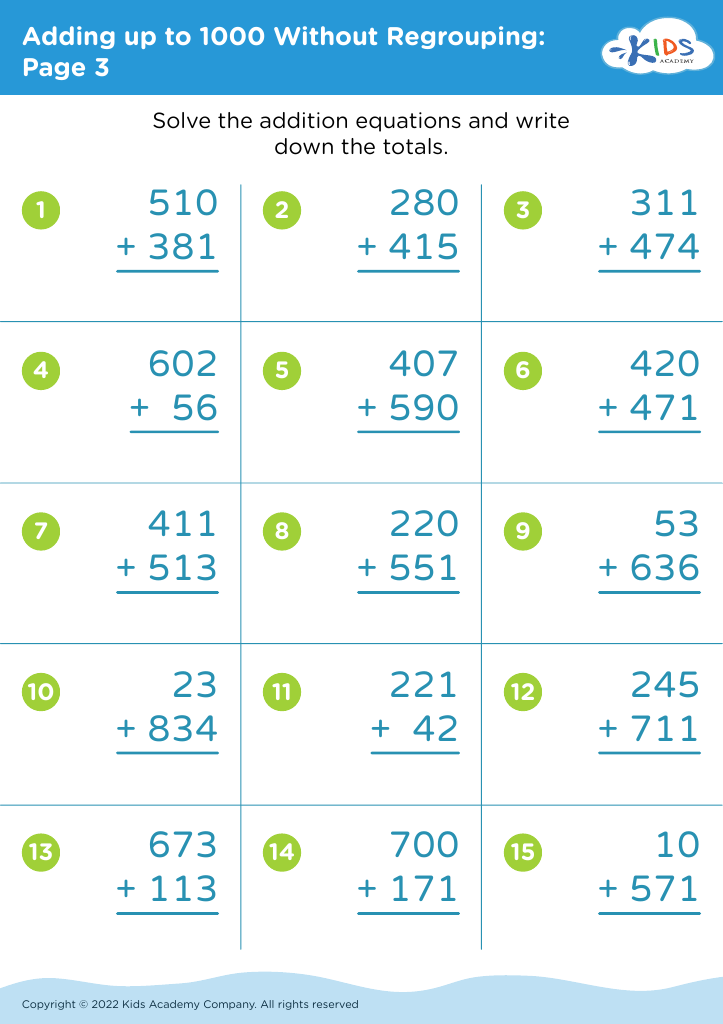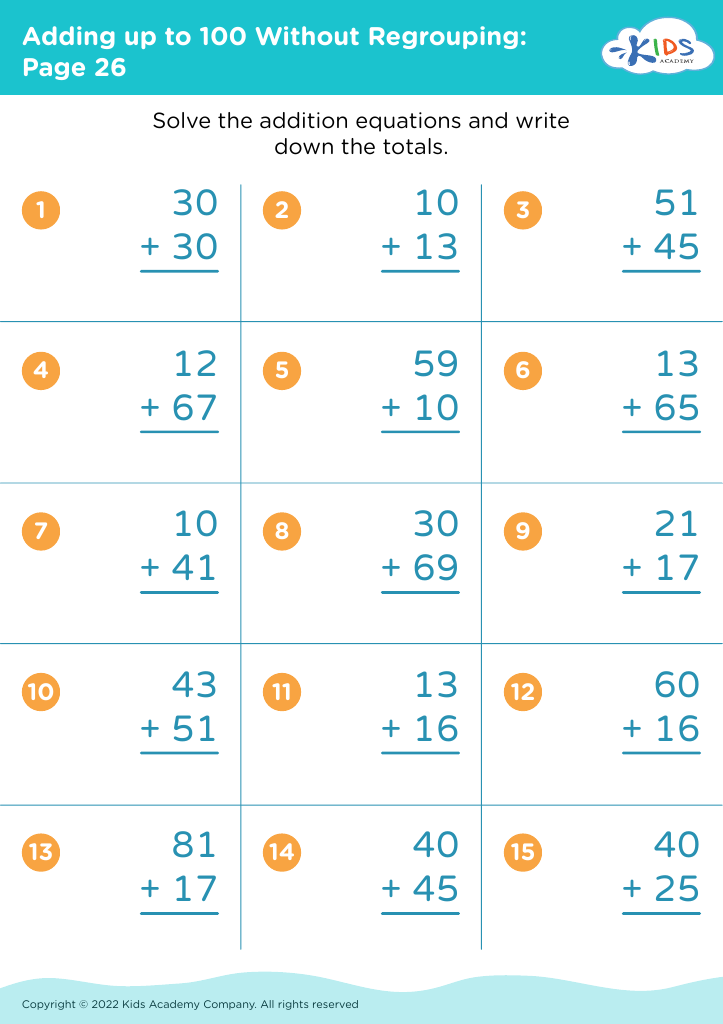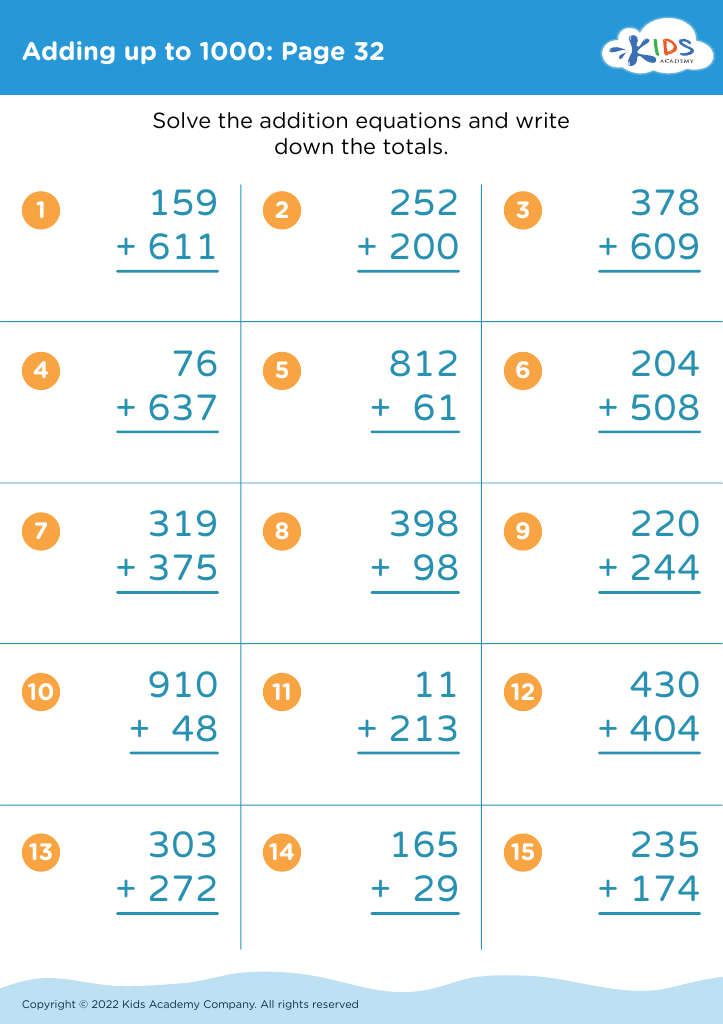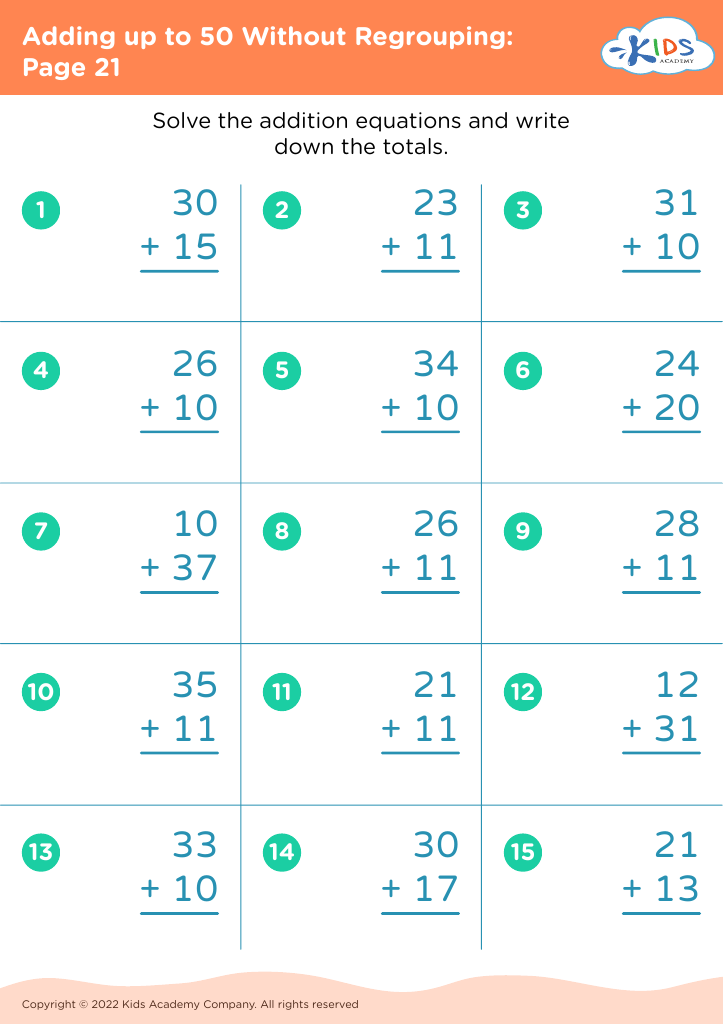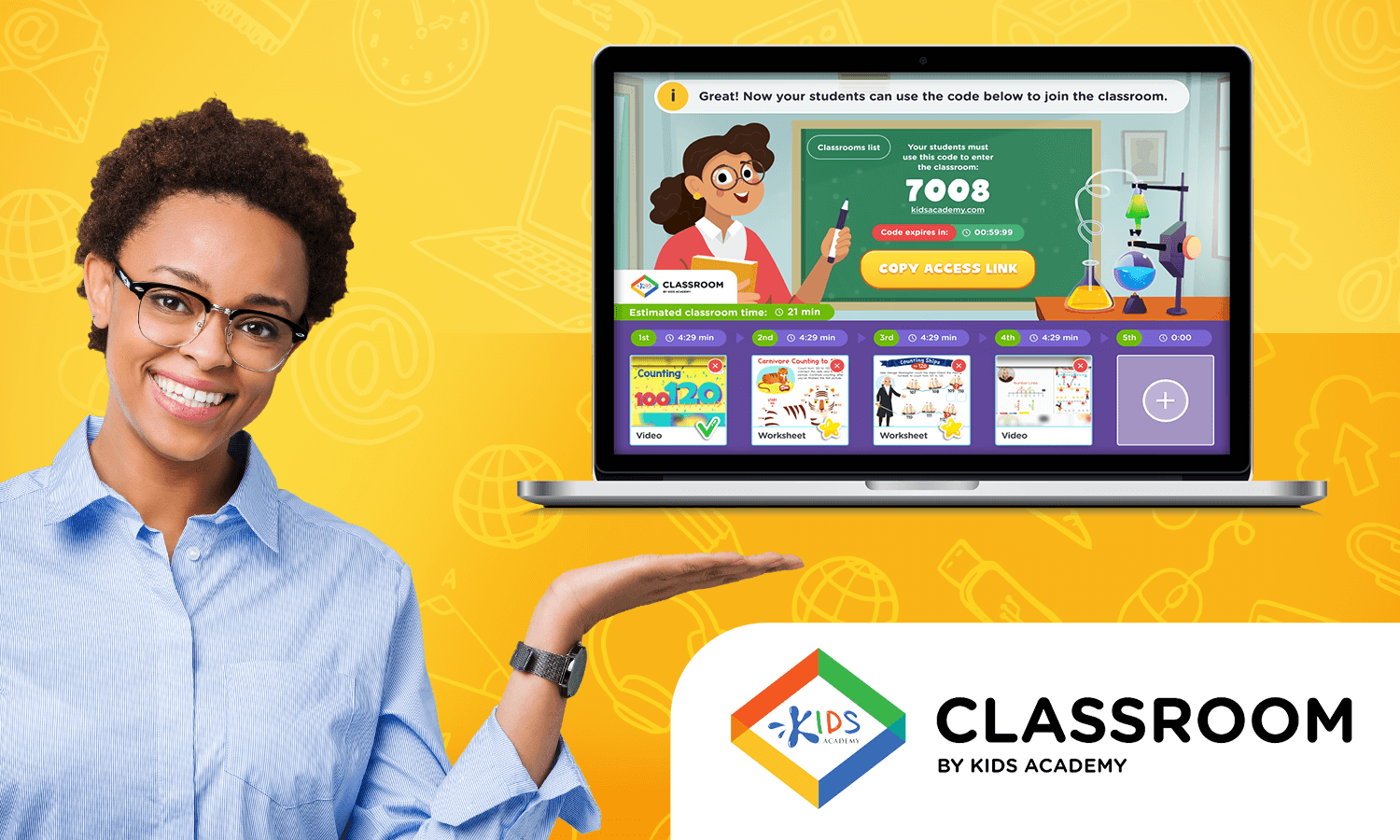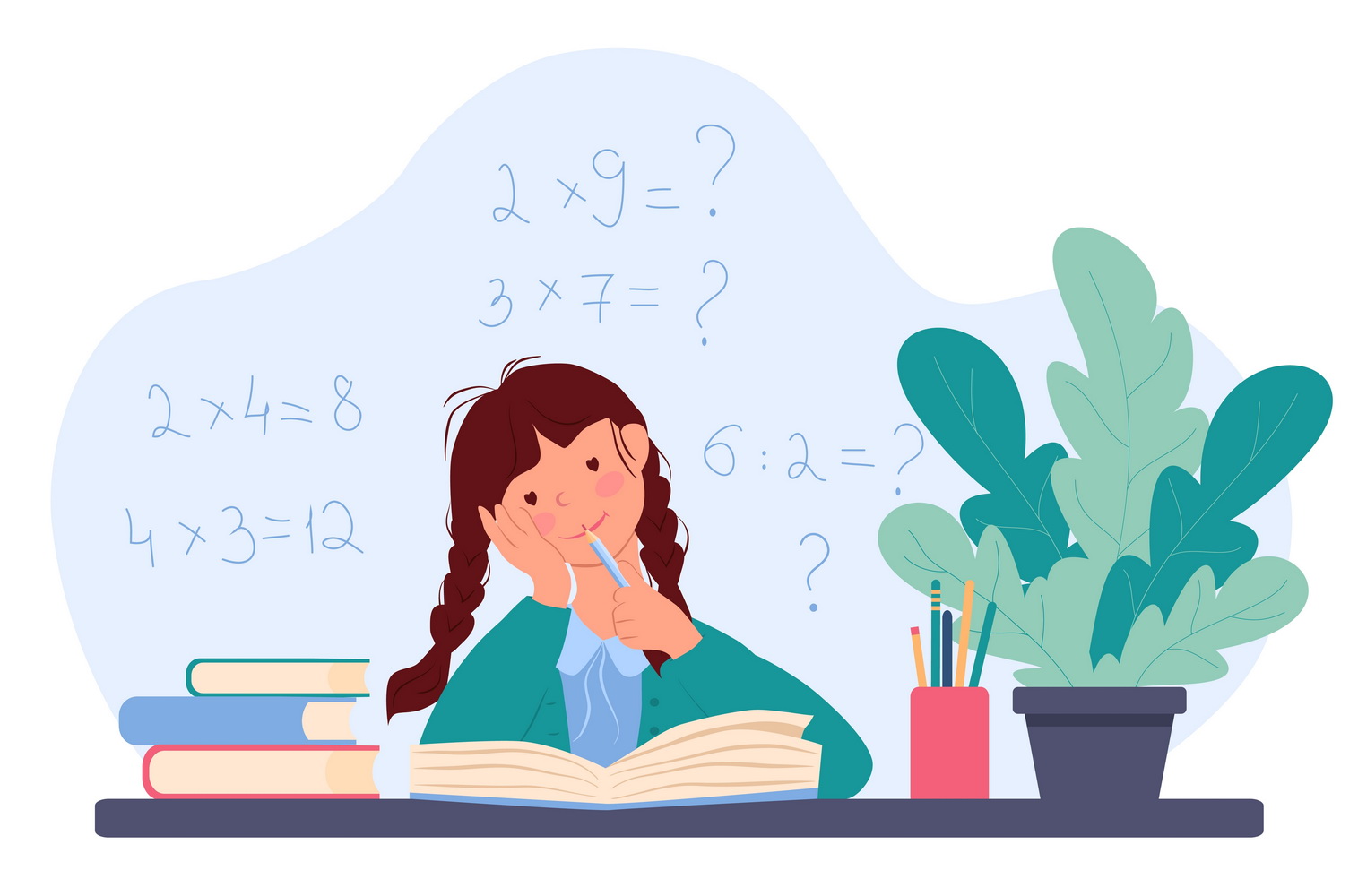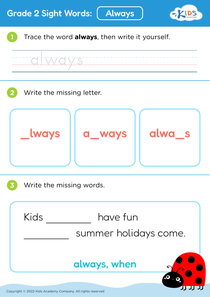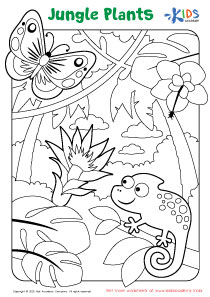Recognize shapes Grade 2 Worksheets
8 filtered results
-
From - To
Explore our engaging Grade 2 Worksheets designed to help students recognize and understand various shapes! Perfect for budding mathematicians, these worksheets provide a fun and interactive way to learn essential geometry skills. Students will identify, classify, and draw shapes while enhancing their understanding through vibrant illustrations and real-world examples. With our user-friendly format, teachers can easily integrate these worksheets into their lesson plans, ensuring a comprehensive learning experience. Boost your child's confidence in math as they master shapes like squares, circles, and triangles, all while developing critical thinking skills. Start exploring our collection today to enrich your classroom activities!
Recognizing shapes is a crucial developmental milestone in Grade 2 that significantly impacts children's overall learning and cognitive skills. For parents and teachers, understanding and supporting shape recognition is essential for several reasons.
Firstly, shape recognition is foundational for mathematical understanding. When children can identify, name, and differentiate between basic shapes like circles, squares, triangles, and rectangles, they build the groundwork for more complex concepts such as area, perimeter, and geometry. This foundational knowledge enhances their problem-solving skills and supports their analytical thinking.
Secondly, recognizing shapes contributes to spatial awareness, a skill crucial for everyday life. Awareness of shapes helps children understand their environment, navigate spaces, and interpret visual information, laying the foundation for success in fields such as art, science, and technology.
Additionally, shape recognition can boost children's confidence and self-esteem. Mastering this skill makes students feel competent in math, which may inspire them to engage more actively in learning.
Lastly, activities related to shape recognition can be a fun bonding experience for parents and children, promoting parental involvement in education. By caring about shape recognition, parents and teachers can reinforce vital skills that will benefit children academically and socially throughout their lives.
